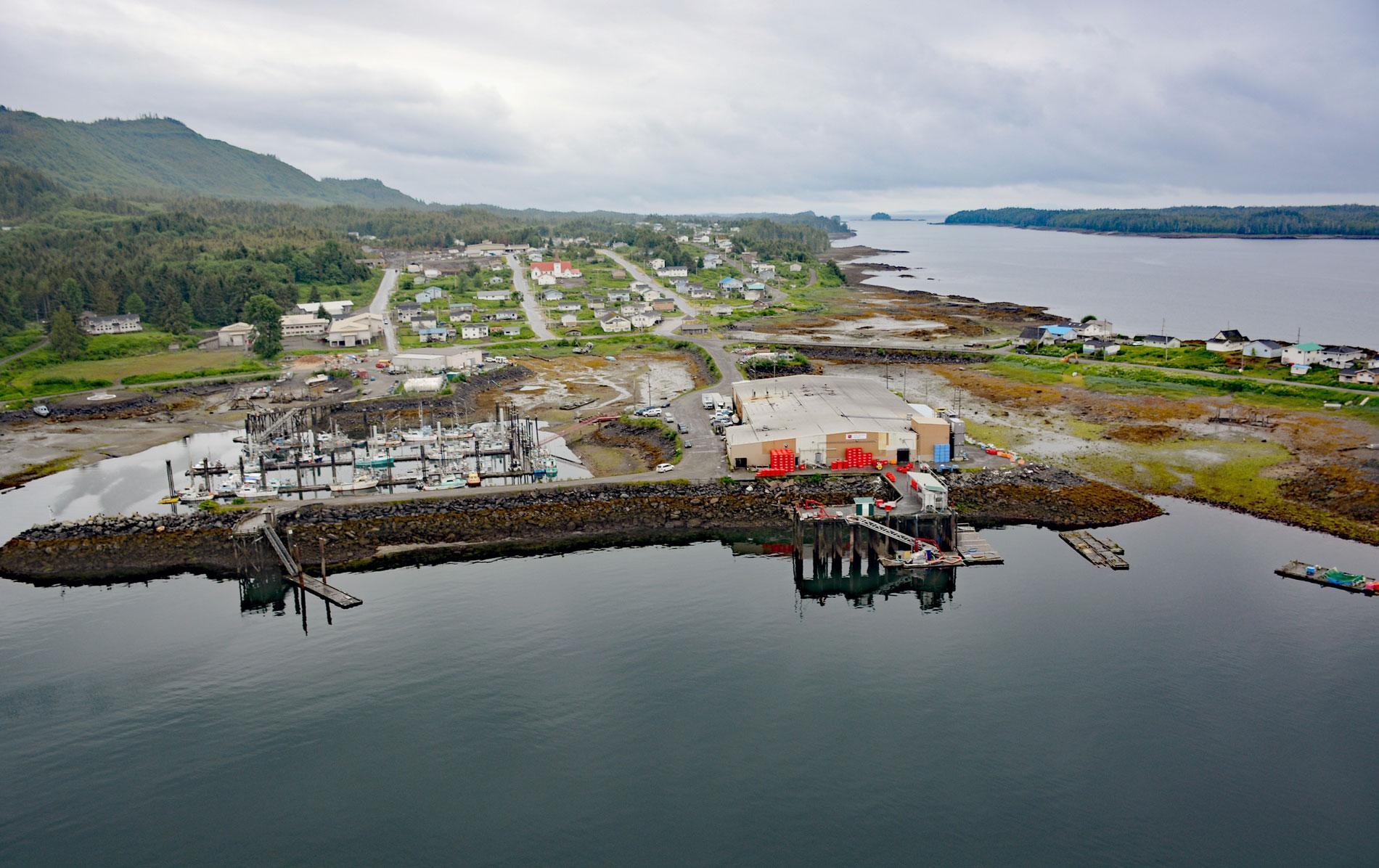Lax Kw’alaams is a Tsimshian community on Port Simpson, an embayment on the eastern coast of Chatham Sound between Flewin Point to the north and Finlayson Island to the south, about 76 miles (123 km) southeast of Ketchikan, and 18 miles (29 km) north-northwest of Prince Rupert, British Columbia. The name Lax Kw’alaams is derived from Laxłgu’alaams which means ‘place of the wild roses’. It is an ancient camping spot of the Gispaxloʼots tribe, one of the nine Tsimshian tribes of the lower Skeena River that today are resident at Lax Kw’alaams. Port Simpson is roughly aligned with the eastern coastal shear zone and is formed by rocks representing the western metamorphic belt, part of the northwest-southeast trending Coast Mountains characterized by four longitudinal belts resulting from the accretion of tectonic terranes. This group of metamorphic rocks includes limestone and dolomite marble, metasedimentary rocks dominated by quartz-rich schists and interlayered felsic and mafic metavolcanic rocks, that locally include pillow lava.
The Coast Tsimshian are distinguished among three divisions based on historical seasonal settlement locations. One division comprised the Gitwalksabae and Gitwilgyoots whose summer and winter territories were both on the coast. A second division consisted of groups with summer villages along the lower Skeena and winter villages on the coast including the Gitzaxłaał who had a summer location on the Ecstall River, Gitsʼiis on the Khyex River, Gitlaan near the Zymagotitz River, Ginaxangiik at the Exchamsiks River, Ginadoiks at Gitnadoix River, Gitando at the Exstew River, Gilutssʼaaw, and Gispaxlo’ots near Shames River. A third division comprised the Kitselas and the Kitsumkalum whose summer and winter territories were on the Skeena River near Kitselas Canyon. In 1834, the Hudson’s Bay Company set up a trading post there called Fort Simpson, later called Port Simpson, named after Captain Aemilius Simpson, to undermine American dominance of the maritime fur trade. In 1857, an Anglican lay missionary named William Duncan brought Christianity to Fort Simpson but feeling that the presence of a fort was bad for the souls of his Tsimshian followers, he relocated to a new village at Metlakatla Pass with more than 800 followers. They later moved again to Annette Island, in Alaska, where he gained authority from the U.S. Congress for an Indian reservation, also called Metlakatla. Today, Lax Kw’alaams is the largest of the seven Tsimshian village communities in Canada.
Lax Kw’alaams is a remote village, and the economy is heavily dependent on natural resource extraction. In the 19th century, the Hudson’s Bay Company introduced the Tsimshian to wage labor in forestry work. Missionary intervention toward the end of the 19th century established sawmills that employed Tsimshian as laborers. During the first decades of the 20th century, their labor involved beachcombing for timber, hand logging, and wage labor in the mills. These activities were usually combined with commercial fishing and subsistence food gathering. The first salmon cannery was built on the Skeena River in 1876. During the next eight decades, there would be almost 40 cannery sites developed, and later abandoned, on the north coast of the mainland. While Tsimshian people provided the bulk of the labor and fish for these canneries during the early era of the industry, they were steadily displaced and replaced as producers and workers. By the 20th century, Tsimshian fishermen were forced out of the industry at higher rates than nonindigenous fishermen and participation in the fisheries in some villages dropped from 100 percent in the 1970s to 29 percent by the early 199os. First Nations on the British Columbia North Coast face dozens of major industrial development proposals, including both crude oil and liquid natural gas pipelines and associated tanker traffic. A natural gas liquefaction and export facility was planned for development near Lax Kw’alaams, but despite the potential employment opportunities, the project was cancelled when the Lax Kw’alaams rejected a $1 billion benefit package for development of the project due to the potential environmental impacts to a salmon habitat. Read more here and here. Explore more of Lax Kw’alaams and Port Simpson here:

